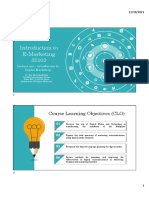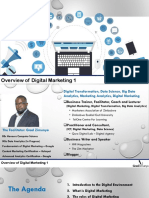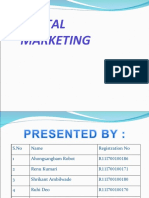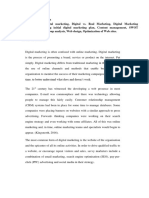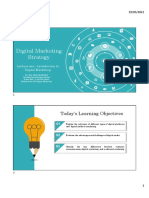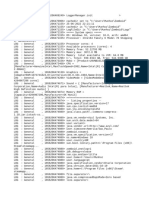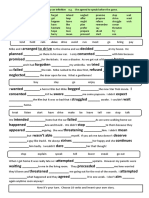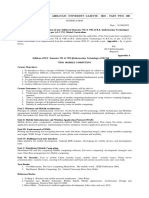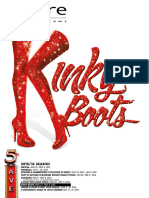Chapter 2 Summary:
Key Learning Objectives:
Explain the relevance of different types of digital platforms and digital media to marketing
Evaluate the advantages and challenges of digital media
Identify the key differences between customer communications for digital marketing and traditional
marketing.
1) How digital marketing has transformed marketing
Since its launch more than 25 years ago, people have started adopting the World Wide Web, known as
the WWW. Over 3 billion people around the globe regularly use digital media and associated
technology. Successful digital marketers need to grasp the scope of the changes driven by this
technology and how it is changing behaviour.
To understand the importance of digital marketing to the future of marketing in general, it’s helpful to
think about what audience interactions we need to understand and manage.
5Ds of managing digital marketing interactions’, for which we need to assess consumer adoption and
how our business can manage them to support marketing goals:
Digital devices. Our audiences interact with businesses using a combination of smartphones, tablets,
laptops, desktop computers, TVs, gaming devices, virtual assistants (like Amazon Echo) and other
connected devices forming the Internet of Things (IoT) (see Chapter 7).
Digital platforms. Most interactions on these devices are through a browser or apps from the major
‘platforms’ or online services, e.g. Facebook™ (and Instagram™), Google™ (and YouTube™),
Twitter™, LinkedIn™, Apple™, Amazon™ and Microsoft™.
Digital media. Different communications channels for reaching and engaging audiences are available,
including advertising, email and messaging, search engines and social networks, which we’ll
introduce in this chapter.
Digital data. The insight businesses collect about their audience profiles and their interactions with
businesses now needs to be protected by law in most countries.
Digital technology. This is the marketing technology – or martech (see Chapter 10 for a
categorisation) – that businesses use to create interactive experiences from websites and mobile apps
to in-store kiosks and email campaigns.
2) Definitions – what are digital marketing and multichannel marketing?
Digital media
Communications are facilitated through content and interactive services delivered by different digital
technology platforms including the Internet, web, mobile phone, TV and digital signage
Digital marketing
The application of digital media, data and technology integrated with traditional communications to
achieve marketing objectives.
�Digital marketing focuses on managing different forms of online company presence, such as company
websites, mobile apps and social media company pages, integrated with online communications
techniques such as Search Engine Marketing, Social Media Marketing, Online Advertising, Email
Marketing and Partnership Arrangements with other Websites.

















